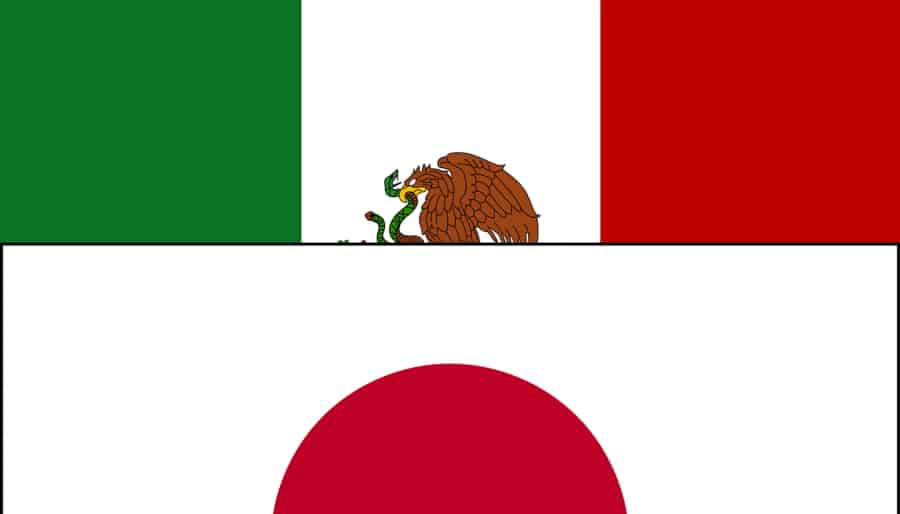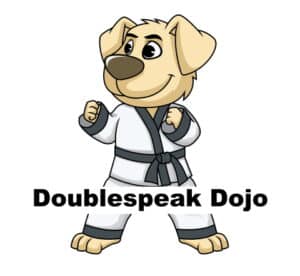
If you are an English speaker on the hunt for a new language to learn, you may be considering Spanish or Japanese. The languages have very diverse roots, origins, and characters. Since the languages are so vastly different, it is hard to tell which language is harder to learn. Is Spanish harder to learn, or is Japanese harder to learn?
Spanish is not harder to learn than Japanese. In fact, for English speakers Japanese is much harder to learn than Spanish. They will need to spend about 320 hours studying Spanish to become fluent, whereas it will take about 2,200 hours to become fluent in Japanese.
In this article we’ll look at comparing Spanish and Japanese language learning, and if learning Spanish is harder to learn or not. This will usually depend on what language is your primary language. Chinese speakers will have a much flatter curve when learning Japanese. Since this article is in English, much of the focus will be on English speakers and their struggles learning the two languages.
Contents
- 1 Is Spanish Harder Than Japanese If You Know English?
- 2 Is Japanese Hard to Learn If You Know English?
- 3 How Long Does It Take to Learn Spanish and Japanese?
- 4 Are Both Spanish and Japanese Taught As Foreign Languages In The U.S.?
- 5 The Final Talking Point about which is harder to learn: Spanish or Japanese
Is Spanish Harder Than Japanese If You Know English?
Every language requires dedication, commitment, and hard work. And motivation to keep you going. (I’ve written specifically about the motivation factor for language learning too.) But while studies agree that both extrinsic and intrinsic motivation is key, there are simply some languages that are harder than others to learn no matter how much motivation you have.
Nevertheless, the difficulty level should not scare you off from learning the language you desire, whether it’s Spanish, Japanese, or something else. With proper preparation and mindset, you can be successful.
English and Spanish are very similar because they come from the same language family. Both languages are Indo-European. Therefore, since they have the same origin, they have many similarities. Native English speakers do not realize how many Spanish words they know until they start learning about the language.
Here is a list of some of the words in English that may surprise many to learn come from Spanish…
| English | Spanish | Meaning |
| corral | corral | yard or pen |
| breeze | brisa | cold wind |
| alligator | lagarto | lizard |
| mosquito | mosquito | little fly |
| patio | patio | inner courtyard |
| guerrilla | guerrilla | little war |
| renegade | renegade | traitor |
| vanilla | vainilla | vanilla |
| cafeteria | cafetería | coffee shop |
| coyote | coyotl | coyote |
For starters, both languages have almost the same letters in their alphabets. The sounds of Spanish letters are very easy for English speakers to pronounce. The letters are comparative to the English lettering, and therefore they are familiar and quicker to memorize.
The structure and grammar of Spanish are very similar to English, as well. That is why so many people choose it to learn as a second language. The biggest hurdle for English speakers to learn is the sentence structures of Spanish sentences. In Spanish, the adjective comes after the noun, which is the opposite of the English convention.
There are thousands of cognates between English and Spanish. Cognates are words that share etymological roots. Thousands of words between English and Spanish and even other Indo-European languages share the same cognates.
The Spanish Alphabet
The Spanish alphabet has 27 letters. There used to be 29 letters, but three letters were removed from the Spanish alphabet in 2010. The letters were taken out of the Spanish alphabet because they were not entirely necessary for pronunciation and grammar. Additionally, they were not altogether compatible with English computers.
- The Spanish alphabet has 22 consonants and five vowels.
- The Spanish alphabet has 30 unique sounds.
- The Spanish alphabet includes the additional letter “ñ.”
If you’d like to learn more about learning Spanish, I’ve written many articles on it:
- Learning Spanish and Italian at the Same Time (8 Tips)
- Spanish Language Learning Programs
- Is Spanish Easier Or Harder Than German?(Surprising Answer)
- Is Spanish Ugly Compared To The Sound Of Other Languages?
- 21 Tips When Learning Spanish
Is Japanese Hard to Learn If You Know English?
English does not have many similarities with Japanese. Japanese is a Japonic language. English and Japanese do not share cognates, and the characters are not the same. Where English uses individual letters, Japanese uses characters that represent pieces of words, or even full words and phrases.
Because of these vast, fundamental differences, it takes a lot more time for a native English speaker to learn Japanese. Where Spanish and English have foundational similarities, Japanese and English do not. Still, an English speaker can absolutely learn Japanese with committed study and practice.
However, as the modern world progresses, the Japanese culture has adapted to certain American words. Some words such as hashtag, smartphone, and upload are all words that Japan has adopted. These adopted words are called wasei-eigo. Wasei-eigo are basically words that are Japanese-made English words.
Americans have also adopted Japanese words. You probably use many of these without realizing it. Below are a few of these examples.
- Emoji
- Anime
- Manga
- Bento
- Futon
- Dojo
- Tsunami
- Tycoon (from the Japanese taikun)
Many linguists have shared that Japanese is in a completely separate language family than any other language. The only languages that are somewhat similar are Turkish and Korean, but they still have vast differences, and their potential ties are disputed.
The Japanese Alphabet
The Japanese alphabet is much more difficult to define than the English alphabet. In the English alphabet, there are 26 letters. However, in Japan, there are three main scripts, two of which are alphabets. These scripts are:
- Hiragana
- Katakana
- Kanji
Hiragana is much like English’s cursive, and it consists of 46 basic “letters.” The second script used in Japanese is Katakana which is much like English’s print. Since this is just a different way to write the same alphabet, there are also 46 letters. Together, Hiragana and Katakana make up the Japanese alphabet that is called Kana.
There is also a third script used in the Japanese writing system called Kanji. A Kanji character can represent a single word, but it can also have different pronunciations depending on the context. Kanji can reflect words as well as thoughts and beliefs.
Learning Kanji is the hardest part of becoming fluent in Japanese. The total number of Kanji is undetermined, but some estimate over 50,000! However, there are only about 2,000 that should be memorized in order to become fluent.
How Long Does It Take to Learn Spanish and Japanese?
Every one is different, has different backgrounds and skill sets…and learning a language is never really done.
Foreign Service Institute (FSI) says that Japanese is one of the hardest languages to learn and that Spanish is one of the easiest languages to learn. Many have said that Japanese is especially difficult to learn for native English speakers.
According to the FSI:
- if a person studies Spanish every single day for three hours, they should pick up Spanish in 6 months.
- If the studying time is reduced to one hour per day, learning Spanish fluently can be achieved in one and a half years.
- The average time to become fluent in Spanish is 48 weeks.
On the other hand, on average, it takes approximately 88 weeks to become fluent in the Japanese language. There are different levels of fluency. If you are seeking to just be able to ask basic questions and give basic responses, then you should be able to have conversations at about six months.
People who study consistently can reach an intermediate Japanese level in about nine months to one year. At the intermediate level, you will start being able to understand television shows and news stations. This is a huge motivating factor for people who are interested in watching anime or other Japanese television.
To fully become proficient in reading, writing, and speaking Japanese, it is essential to study for at least two years, depending on your desired comprehension level. This type of comprehension would be ideal if you were planning on fully immersing yourself in the Japanese culture.
Are Both Spanish and Japanese Taught As Foreign Languages In The U.S.?
Many people are very interested in learning Spanish. In almost every high school, they offer Spanish as a foreign language option. In every public library, the aisles are stacked with books teaching how to speak Spanish and even novels written in Spanish. Many elementary schools are even starting to do dual-language learning.
Since there are more Spanish speakers in the United States, there are always opportunities to practice your Spanish skills. There are even certain areas that are almost predominantly Spanish-speaking, such as many parts of New Mexico, Texas, Arizona, and Southern California.
In the United States, there are approximately 43 million people who speak Spanish. There are approximately one to one and a half million Japanese speakers in the United States. Due to demand, there are not as many opportunities to learn Japanese in an educational setting.
However, apps like Duolingo, Memrise, and many more are available to teach foreign languages like Japanese at your own pace. These apps are invaluable for learning the language and go over all aspects from the alphabet to pronunciation and spelling to the different scripts. They are also often free. There are many opportunities to learn.
The Final Talking Point about which is harder to learn: Spanish or Japanese

Learning any language is difficult and requires hard work, but there are some languages that are more complex than others. However, the benefits of learning a second language cannot be overstated. Both Spanish and Japanese have amazing cultural significance that you can immerse yourself in by studying the languages.
If you are interested in becoming fluent in a language in a shorter amount of time, then it would be preferable to learn Spanish. For English speakers, Spanish is one of the easiest foreign languages to learn, while Japanese is one of the hardest languages to learn.
Sources:
https://www.jpf.go.jp/e/project/japanese/education/
https://www.worldwideerc.org/news/how-japan-is-tackling-language-learning-for-foreigners
https://www.state.gov/foreign-language-training/
https://effectivelanguagelearning.com/language-guide/language-difficulty/
